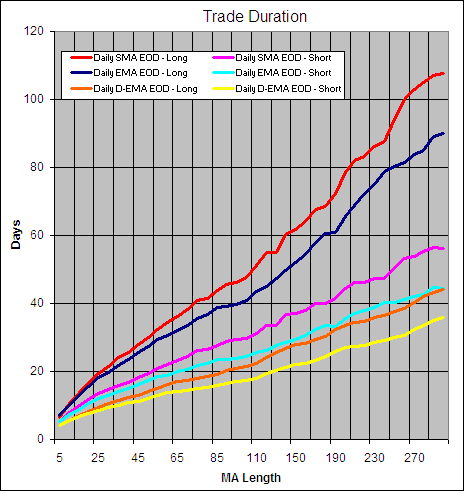Simple V Moving Averages
Post on: 16 Март, 2015 No Comment

Moving averages are more than the study of a sequence of numbers in successive order. Early practitioners of time series analysis were actually more concerned with individual time series numbers than they were with the interpolation of that data. Interpolation. in the form of probability theories and analysis, came much later, as patterns were developed and correlations discovered.
Once understood, various shaped curves and lines were drawn along the time series in an attempt to predict where the data points might go. These are now considered basic methods currently used by technical analysis traders. Charting analysis can be traced back to 18th Century Japan, yet how and when moving averages were first applied to market prices remains a mystery. It is generally understood that simple moving averages (SMA) were used long before exponential moving averages (EMA), because EMAs are built on SMA framework and the SMA continuum was more easily understood for plotting and tracking purposes. (Would you like a little background reading? Check out Moving Averages: What Are They? )
Simple Moving Average (SMA)
Simple moving averages became the preferred method for tracking market prices because they are quick to calculate and easy to understand. Early market practitioners operated without the use of the sophisticated chart metrics in use today, so they relied primarily on market prices as their sole guides. They calculated market prices by hand, and graphed those prices to denote trends and market direction. This process was quite tedious, but proved quite profitable with confirmation of further studies.
To calculate a 10-day simple moving average, simply add the closing prices of the last 10 days and divide by 10. The 20-day moving average is calculated by adding the closing prices over a 20-day period and divide by 20, and so on.
This formula is not only based on closing prices, but the product is a mean of prices — a subset. Moving averages are termed moving because the group of prices used in the calculation move according to the point on the chart. This means old days are dropped in favor of new closing price days, so a new calculation is always needed corresponding to the time frame of the average employed. So, a 10-day average is recalculated by adding the new day and dropping the 10th day, and the ninth day is dropped on the second day. (For more on how charts are used in currency trading, check out our Chart Basics Walkthrough .)
Exponential Moving Average (EMA)
The exponential moving average has be refined and more commonly used since the 1960s, thanks to earlier practitioners’ experiments with the computer. The new EMA would focus more on most recent prices rather than on a long series of data points, as the simple moving average required.














